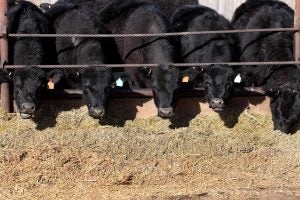The U.S. Food and Drug Administration released preliminary findings from a multi-year study investigating the spread of bacteria to leafy greens being grown in Yuma County, Arizona.
The study was undertaken after a 2018 E. coli outbreak that was linked to romaine lettuce from the Yuma growing area. The investigation found samples of canal water that tested positive for the outbreak strain of E. coli.
However, that strain of E. coli was not found at a nearby cattle feeding operation, and the investigation ultimately found “no obvious route for contamination” from the feeding operation.
“Despite those 2018 investigative findings, we are concerned that some have erroneously interpreted the new FDA study as suggesting that the cattle industry is responsible for the outbreak, even though the scientific evidence does not support such a conclusion,” said National Cattlemen’s Beef Assocation CEO Colin Woodall. “In fact, FDA has expressly stated that the multi-year study did not identify the specific source and route of contamination that contributed to the 2018 outbreak.”
The research team conducted over 100 sampling events at 55 sites, resulting in more than 5,000 unique samples collected and 15,000 individual tests for the detection of generic E. coli, Salmonella, and Shiga toxin-producing E. coli (STEC), including E. coli O157:H7. An obvious site to test samples included the McElhaney Feedyard, the feedlot closest to the lettuce grown in the area.

Researchers then performed whole genome sequencing and analyzed isolated strains to determine their genetic relatedness as well as distribution across the study region.
Over 40 types of STEC were found in the samples taken, including air, water, soil, and plants. Bacteria were found in the air near the cattle-feeding operation, and water, soil, and plant samples in the area led researchers to believe that dust can spread pathogens over a distance.
On the surface, cattle operations appear to be an easy target, but cattle and beef producers are already subject to countless local, state, and federal regulations that govern their operations to minimize the environmental impact and ensure the food supply is safe.
While the findings are regionally specific and do not lead to answers regarding specific incidences of E. Coli outbreaks, the FDA says that the findings will help to address knowledge gaps identified in the Leafy Green STEC Action plan concerning adjacent and nearby land use.
Members of the Arizona leafy greens industry will be working through the Desert Food Safety Coalition to continue to collaborate with the Arizona Department of Agriculture, University of Arizona Extension, Yuma Fresh Vegetable Association, Yuma Safe Produce Council, Arizona Farm Bureau, Arizona Leafy Green Marketing Agreement, Western Growers, USDA-APHIS Wildlife Services, Arizona Cattle Feeders’ Association, additional grower and landowner coalition members and other agricultural community stakeholders to engage the industry and inform best practices to improve food safety in the region.
“The cattle and beef industry takes its responsibility for food and consumer safety seriously. Clearly, more scientific data is needed, but we must not allow ourselves to get ahead of science and play the blame game,” said Woodall. “Farmers and ranchers dedicate significant resources toward identifying and implementing practices that protect the environment while also supporting food safety.”
»Related: Yuma sets up portable toilets so fields don’t become the migrants’ ‘facilities’

